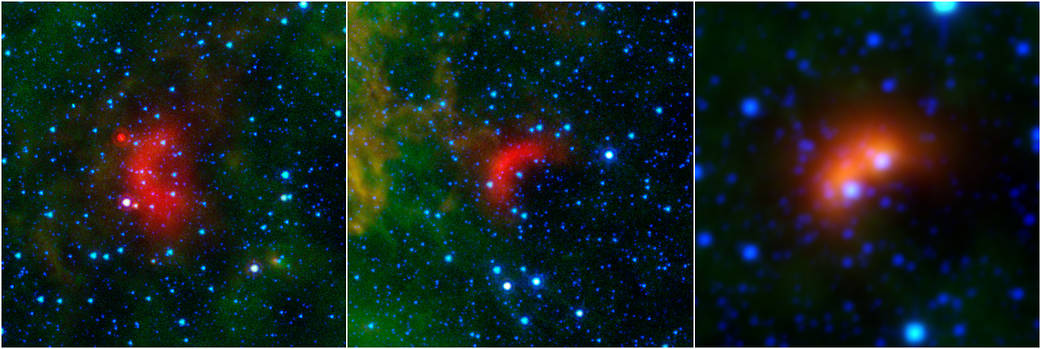Bow shocks thought to mark the paths of massive, speeding stars are highlighted in these images from NASA’s Spitzer Space Telescope and Wide-field Infrared Survey Explorer, or WISE.
Cosmic bow shocks occur when massive stars zip through space, pushing material ahead of them in the same way that water piles up in front of a race boat. The stars also produce high-speed winds that smack into this compressed material. The end result is pile-up of heated material that glows in infrared light. In these images, infrared light has been assigned the colored red.
Green shows wispy dust in the region and blue shows stars.
The two images at left are from Spitzer, and the one on the right is from WISE.
The speeding stars thought to be creating the bow shocks can be seen at the center of each arc-shaped feature. The image at right actually consists of two bow shocks and two speeding stars. All the speeding stars are massive, ranging from about 8 to 30 times the mass of our sun.
NASA’s Jet Propulsion Laboratory, Pasadena, Calif., manages the Spitzer Space Telescope and WISE missions for NASA’s Science Mission Directorate, Washington.
For more information about the Spitzer mission, visit: http://spitzer.caltech.edu and https://www.nasa.gov/spitzer.
More information about WISE is online at: https://www.nasa.gov/wise.



























